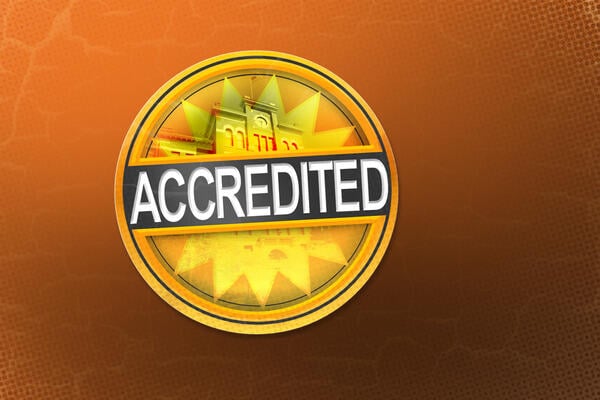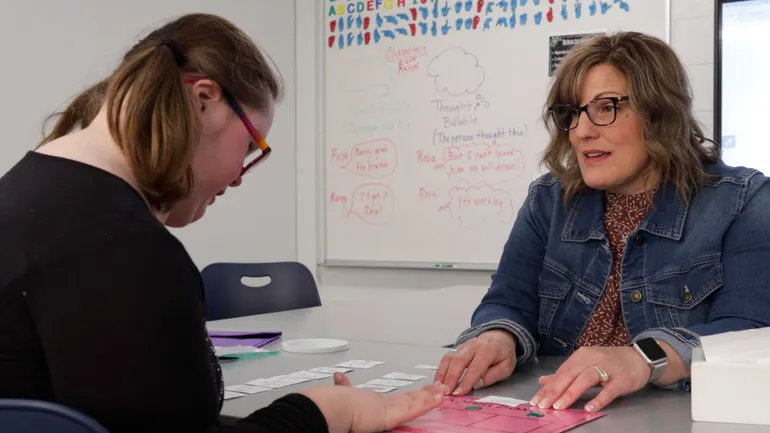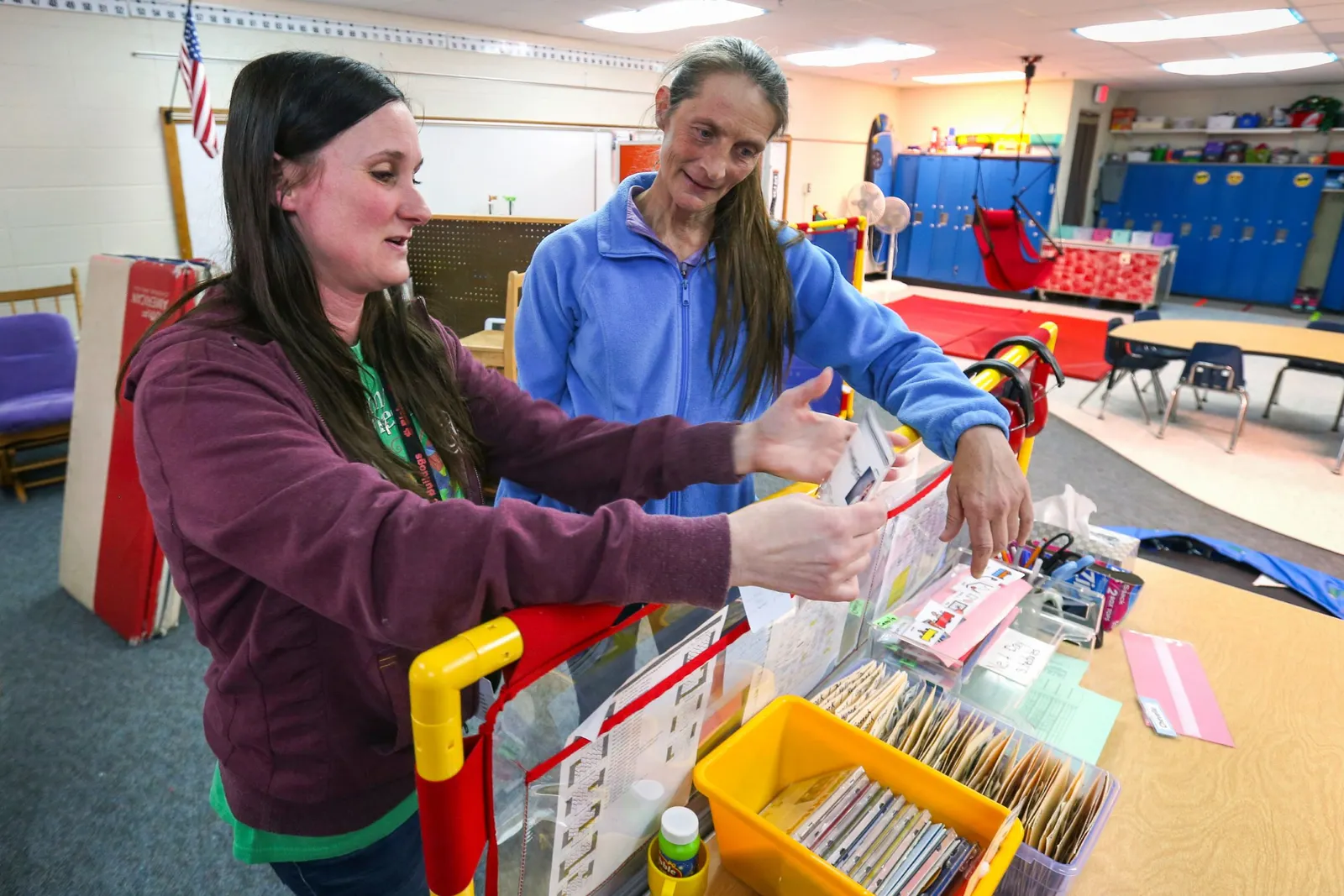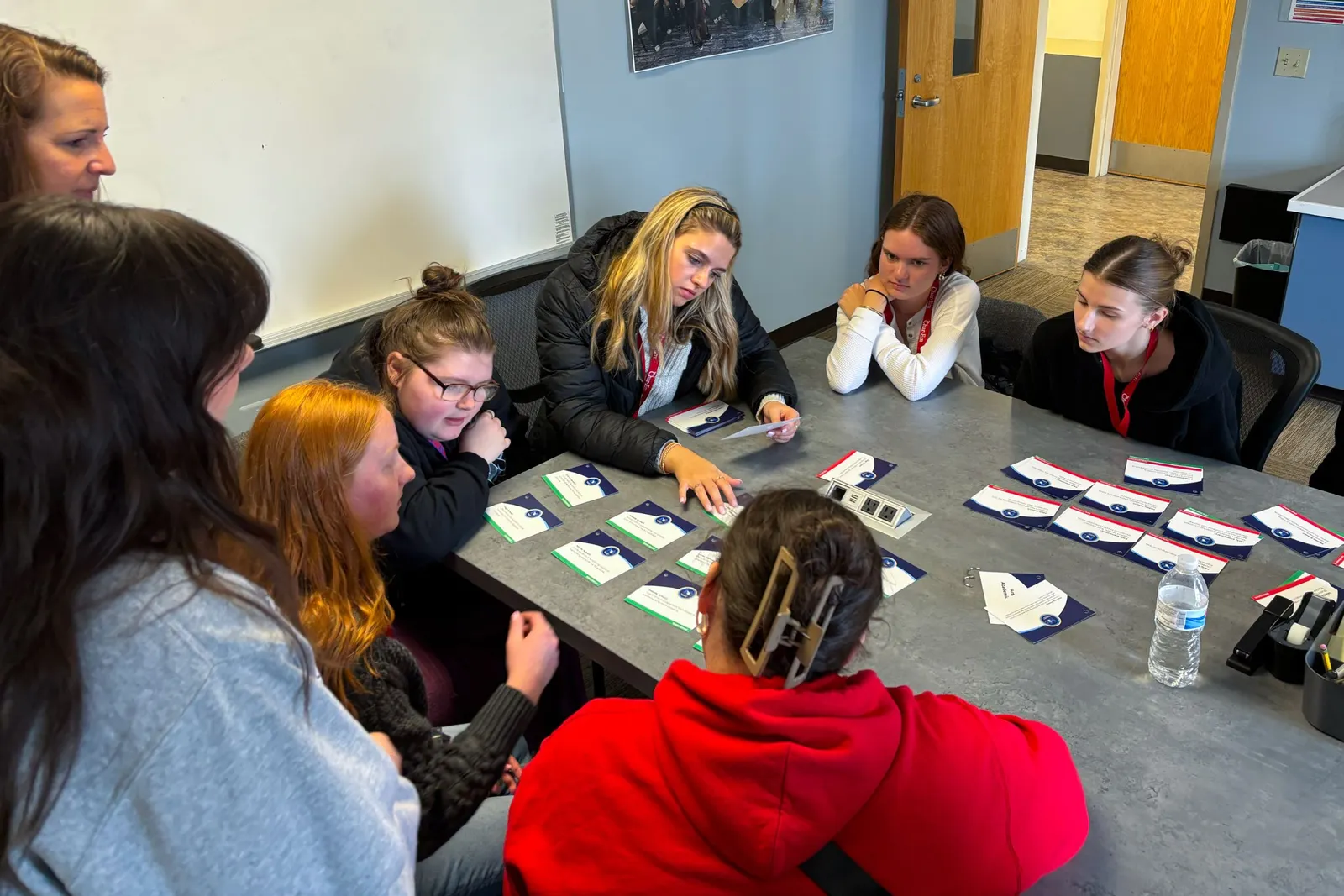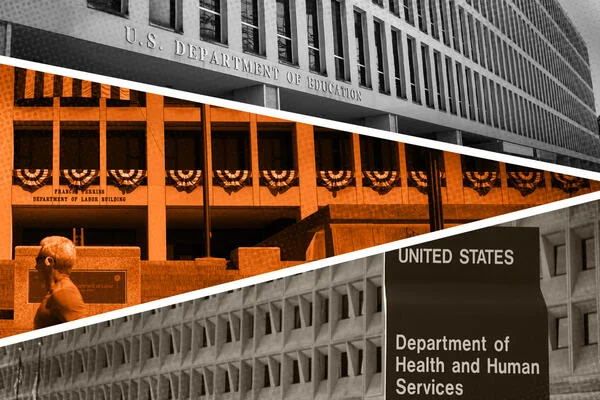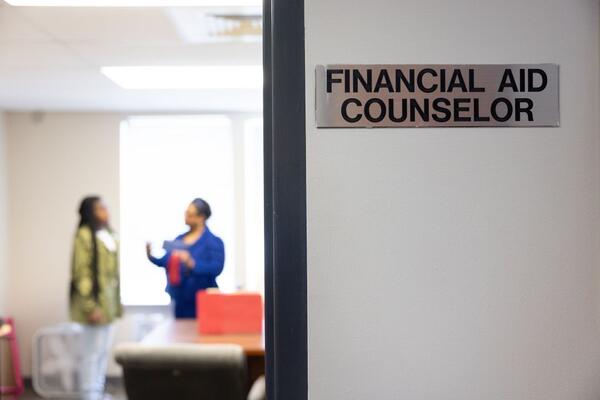The Trump administration is soon expected to propose a plan that would cap loans for a number of advanced degrees—including master’s and doctoral degrees in nursing—and it’s gone viral on social media.
From TikTok to Instagram, to local news headlines, the plan set off a storm of online criticism as influencers and advocacy groups take issue with the supposed declassification of certain degrees. But defining programs as professional or graduate isn’t a debate about social prestige or cultural characterization; it’s a debate about access to student loans, and now the Education Department is saying it’s time to “set the record straight.”
“Certain progressive voices have been fear mongering about the Department of Education supposedly excluding nursing degrees from being eligible for graduate student loans,” the department said in a news release Monday. “This is misinformation.”
The commentators are concerned about an upcoming federal rule, prompted by Congress’s One Big Beautiful Bill Act, that could limit student loan access depending on what post-baccalaureate program a student enrolls in. Certain advanced degrees like dentistry, law or a masters in divinity will be eligible for higher student loans. (An advisory committee approved a draft of the rule in early November, which is slated to be formally proposed on the Federal Register in early 2026.)
Inside Higher Ed has been reporting on the new loan limits for months and closely followed the negotiations over which programs should be considered as professional. So, here’s what you need to know about how the loan limits really work.
Graduate v. Professional Is a Technical Term
Many public critics of the proposal argue that not considering careers like nursing, speech pathology, teaching and social work as professionals would be a disrespectful blow to the dignity of students, many of whom are women, and the perceived value of the pathways they are pursuing. Some have even made uninformed suggestions that this could interfere with a students’ ability to gain licensure or a job after graduation. But those arguments imply that the terms have to do with a student’s level of competency or the capacity of a degree program, which they don’t.
@vickichanmd Starting July 2026, “professional” students will be eligible for 50K a year in federal loans, while “nonprofessional” students $20,500. Coincidence that the fields chosen to get less than half the support are predominantly female? 🤔 ETA: I know I forgot some degrees, especially public health. So sorry for the oversight, 😥 should have been at the top of the list after the pandem¡c.
Instead, the department would use the labels of professional and graduate, as defined in the department’s draft rule, to determine how much students can borrow.
Here’s how that will work. If a degree falls in one of the 11 main categories deemed professional, a student pursuing it can take out up to $50,000 a year for four years or $200,000 total. Meanwhile, a student in any other graduate degree program can only borrow $20,500 per year or $100,000.
The lifelong limit for all borrowers is $257,500 and that includes any loans from a bachelor’s degree. So, if a student were to pursue both a Master’s in public health and a medical degree, or any other combination of degrees from the two categories, they would not be able to combine the loan limits to access $300,000 total.
Before the One Big Beautiful Bill Act, students in any post-baccalaureate program could borrow up to the cost of attendance through a program known as Grad PLUS. Students in a master’s or doctoral program who already took out a Grad PLUS loan prior to July 1, 2026 will maintain access to loans for up to the full cost of attendance as long as they stay within the same program, under the draft plan.
And prior to the legislation, the term professional had little substantial meaning. The federal definition in the Higher Education Act served more as a guideline for colleges as they decided whether to self-identify their doctoral programs as professional and to distinguish between degrees that led to a career in the field or in academia. Master’s degrees, like a master’s of science in nursing, had no reason to call themselves professional.
It’s not clear how the loan caps will affect students. Critics of the plan argue they’ll make financing education more difficult and lead to a shortage of employees, and some research has suggested that students will have to turn to private loans to pay for the program. However, suggesting that certain job titles are being “declassified” or will “no longer” be deemed credible is misleading.
@reygantawney Replying to @Kayla Perkins NP programs are NOT included in the DOEs proposed “professional degree” definition, meaning NP students fall under lower loan caps. This proposal isn’t final, but the implications could be massive for students and the healthcare workforce. #departmentofeducation #nursepractitionerstudent #nursepractitioner #healthcare #healthcareworker ♬ original sound – REYGAN TAWNEY
What Programs Count as Professional?
So, the real question then becomes which programs count as professional and how did the Trump administration decide that definition?
Currently, 11 main degrees would be considered professional under the draft rule. Those degrees, almost all of which are doctoral, include: medicine, osteopathic medicine, podiatry, chiropractic, optometry, pharmacy, dentistry, veterinary medicine, law, theology, and clinical psychology. All but one—clinical psychology—were noted in the HEA definition.
Clinical psychology was added during the negotiating process, which wrapped up in early November. One member of the negotiating committee argued that there was a high demand for medical providers to treat patients with mental health challenges, particularly veterans diagnosed with PTSD.
@urnurseguru NPs weren’t ‘removed’ from anything except a loan bucket they never belonged in 😂💅 Stop confusing LOAN categories with your PROFESSIONAL status. #nursingtiktok #nursepractitioner #studentloans #npschool #urnurseguru ♬ original sound – URNurseGuru
Similar arguments were made for other health care roles like nurses, audiologists and occupational therapists and some committee members warned that adding one category and not others could make the proposal vulnerable to legal challenges. But the Trump administration wanted to keep the new legal definition almost as narrow as possible.
Multiple sources familiar with the negotiation process told Inside Higher Ed that committee members warned the department that certain industry groups would push back.
“I was absolutely expecting something like this,” one source said. “The only question was which profession would break through. But among the politically savvy people I talked to we were betting nurses.”
Why Did ED Define Professional This Way?
Education Department officials repeatedly said during the negotiations that the narrow definition reflected Congress’s intent—to limit federal spending on graduate student loans.
Between 2000 and 2020, the number of Americans who had taken out federal student loans doubled from about 21 million to about 45 million and the amount they owed skyrocketed from $387 billion to $1.8 trillion, according to a 2024 report from the Brookings Institute, a nonpartisan D.C. think tank.
And research from multiple sources shows that much of that increase in debt can be traced back to graduate students. A 2023 report from the Department of Education showed that while the amount of undergraduate loans decreased between 2010 and 2021, the amount of graduate student loans steadily grew. And though individual graduate students only make up about 21 percent of all borrowers, they could soon be responsible for the majority of all outstanding debt.
Another study from the Georgetown Center on Education and the Workforce shows that between 2000 and 2024, the median net tuition and fees among graduate degree programs have more than tripled and the median debt principal among graduate borrowers has grown from $34,000 to $50,000.
The Trump administration and Republicans on Capitol Hill say that results from a lack of limits on federal loans. They argue that with essentially unlimited graduate loans, colleges and universities have no incentive to keep costs low and students are convinced to take out more debt than they can handle. By ending Grad PLUS and limiting larger loans to a narrow group of degrees, they say, the goal is to drive down college costs and lower government spending.
“Placing a cap on loans will push the remaining graduate nursing programs to reduce their program costs, ensuring that nurses will not be saddled with unmanageable student loan debt,” the department’s fact sheet noted.
What Consequences Could It Cause?
But the online critics and other advocates question whether the loan caps will actually reduce student debt and drive down college costs.
They are worried that instead of lowering college costs, it will force more students—particularly low-income, first generation students and students of color—to depend on the private loan market.
For many of those borrowers, depending on private lenders could mean higher interest rates and more debt to be paid off. But some, especially those with low credit scores or no credit history, might not be able to access any loan and then wouldn’t be able to pursue certain degrees.
Critics also argue that the loan cap will not only limit opportunities for socioeconomic mobility, but also cause workforce shortages in high-demand, high-cost careers such as nursing, physical therapy and audiology as well as high-demand, low-return careers such as social work and education.
@addieruckman The US Department of Education is considering new rules that would significantly change the definition of what is deemed a “professional degree,” affecting graduate programs and potentially capping federal loan amounts for those not meeting the new definition. This debate over which programs qualify for “professional” status could likely impact students’ access and ability to afford their education. What we do is so important, even if the government doesn’t recognize it!! #departmentofeducation #slp #slpsoftiktok #CapCut ♬ original sound – casey
“At a time when healthcare in our country faces a historic nurse shortage and rising demands, limiting nurses’ access to funding for graduate education threatens the very foundation of patient care,” said Jennifer Mensik Kennedy, president of the American Nurses Association, which is a vocal critic of the draft rule. “In many communities across the country, particularly in rural and underserved areas, advanced practice registered nurses ensure access to essential, high-quality care that would otherwise be unavailable.”
The Education Department countered that internal data indicates 95 percent of nursing students borrow below the $20,500 annual loan limit and wouldn’t be affected by the new cap. They also added that this loan cap only applies to post-baccalaureate degrees; about 80 percent of the nursing workforce just has an associate’s degree in nursing or a bachelor’s of science in nursing—both of which can lead to certification as a registered nurse.
The department’s proposal could still be amended before it takes effect. The public will have at least 30 days to comment on the plan once it’s posted to the Federal Register. After the public comment period ends, ED officials will have to review and respond to the comments before issuing a final rule. But most higher ed experts don’t expect anything in the proposal to change no matter how many critiques ED receives.
After that, Congress could still make changes to the law or a new administration could opt to rewrite the definition. But that would take time and likely more Democrats in office, so significant change isn’t anticipated any time soon.



